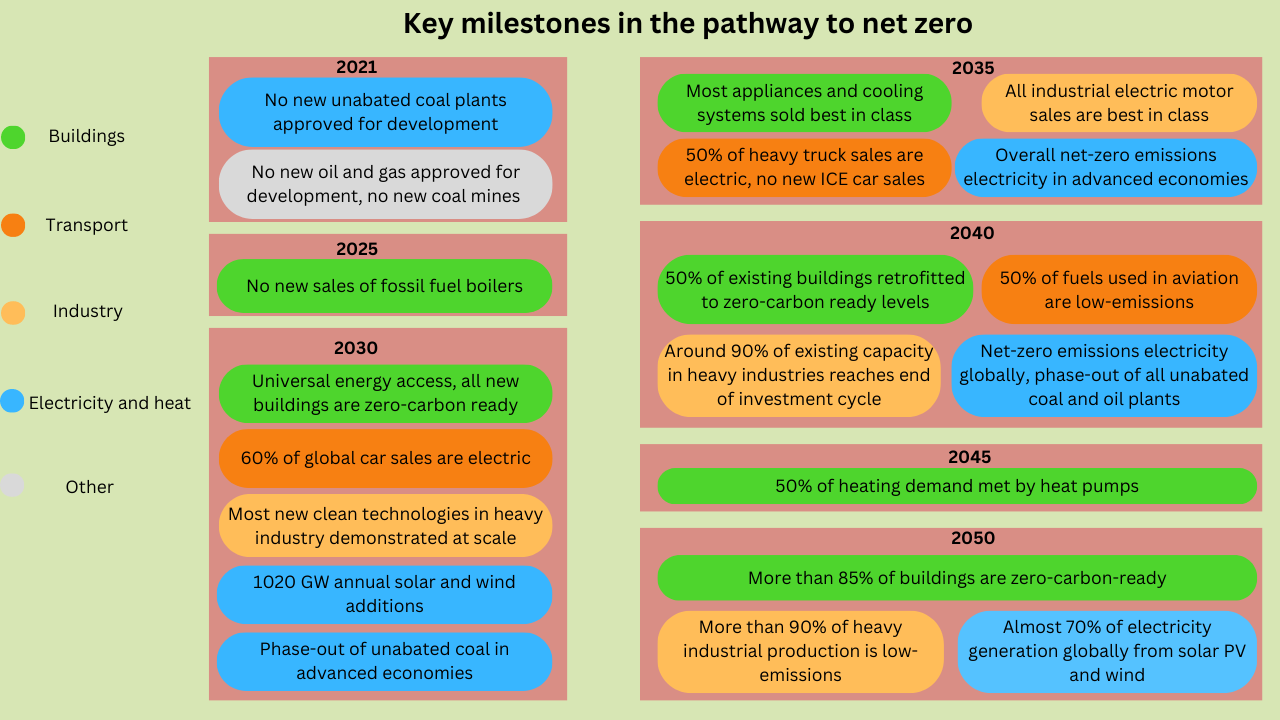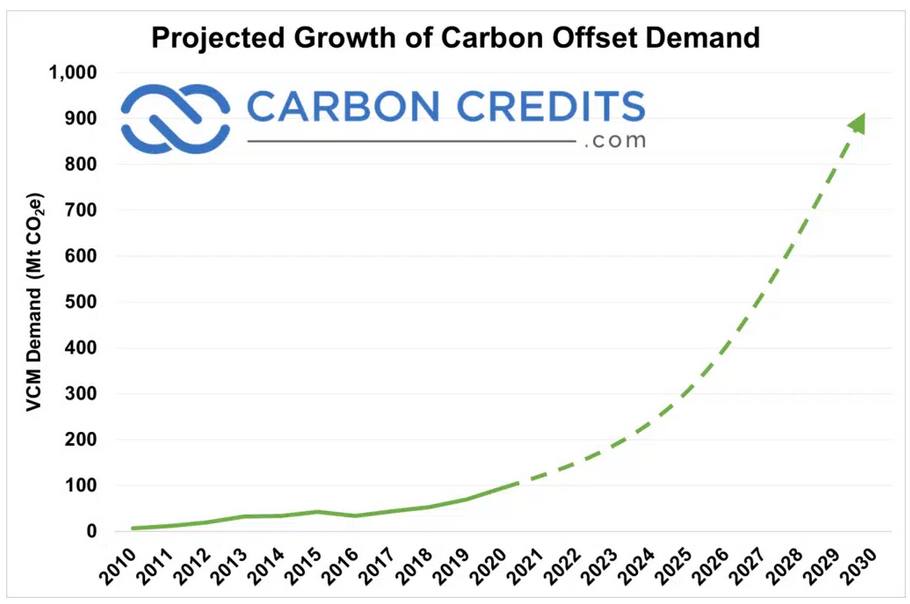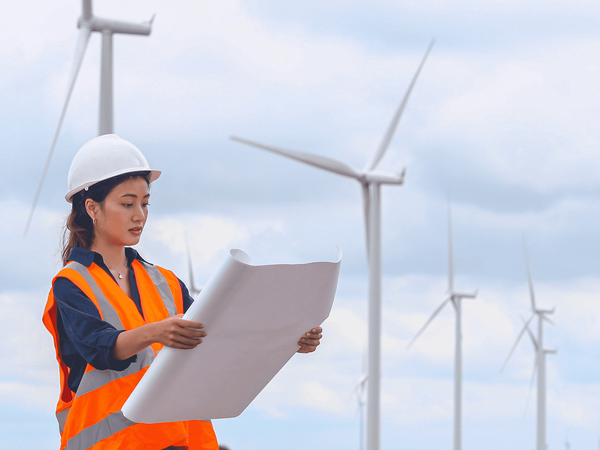Carbon Neutral vs Net Zero

As of writing this article, only 27 years are remaining to reach net zero emissions for the majority of the countries so that the global average temperature remains ideally below 1.5 degrees C. Understanding carbon neutrality and net zero represent crucial pathways towards a sustainable future and addressing this target.
Carbon Neutral is a pathway to net zero.
The term "carbon" commonly refers to carbon dioxide (CO2), the primary greenhouse gas responsible for climate change. Carbon neutrality works towards balancing the amount of carbon emissions generated and the amount of carbon removed from the atmosphere.
Achieving carbon neutrality requires individuals, organizations, or companies to calculate their total emissions and then invest in projects or actions that offset an equivalent amount of carbon.
The work for carbon neutrality usually consists of planting trees to absorb CO2, investing in renewable energy sources, implementing energy-efficient measures, and supporting carbon capture and storage initiatives.
Additionally, it may involve investing in nature-based solutions that enhance carbon sinks, such as the preservation and restoration of forests, wetlands, and other natural habitats.
The ultimate objective is to achieve a net-zero carbon footprint by compensating for emissions through green initiatives that reduce or remove carbon.
Read: Unlocking sustainability: 3 Circular Economy principles
Net Zero is a destination
The Net Zero concept has a more ambitious time-frame, aiming to balance not only CO2 emissions but also other greenhouse gases (GHGs) like methane (CH4), nitrous oxide (N2O), and fluorinated gases.
The concept was originated to limit the rise of average global temperature to 1.5 degrees Celsius by 2100 to avoid the most catastrophic and irreversible impacts of climate change.
However, news came around this week that scientists are claiming there is a 66% chance that we will meet the 1.5 degrees Celsius threshold between now and 2027.
In this case, there is nothing else than taking the next crucial steps that involve decarbonization through measures such as reduced consumption, electrification, and the transition to renewable energy sources.
Many countries, including members of the European Union, Japan, South Korea, and 110 others, have committed to achieving carbon neutrality by 2050.
However, certain major polluters face significant challenges in their journey towards carbon neutrality.
For example, Indonesia, the largest coal exporter, China, the largest crude oil importer, and the USA, the largest producer and consumer of gas and oil, have a greater gap to bridge. China aims to reach carbon neutrality by 2060.

Figure 1 provides an overview of our pathway towards net zero, with a target deadline of 2050. By 2030, global CO2 emissions should be reduced by 50-55% compared to 2010 levels, and efforts are already underway to generate negative emissions through reforestation and carbon removal technologies.
Achieving net zero requires a comprehensive approach that focuses on emission reductions and systemic changes across various sectors. It is estimated that we have a cumulative carbon budget of 570 GtCO2 by 2050.
Carbon neutrality acts as an essential stepping stone, enabling the adoption of renewable energy sources, enhancing energy efficiency, promoting sustainable agricultural practices, and implementing technologies like carbon capture and storage (CCS).
What does it take to reach Net Zero?
Achieving net-zero targets is all about reshaping how we live, work and solve problems and how we run our companies.
Figure 2 shows the key milestones in different sectors, such as buildings (green), transport (dark orange), industry (light orange), electricity and heat (blue) and other (grey) in the pathway to net zero by 2050.
Realistically, a track towards net zero by 2050 faces various interventions from politics, business, technologies and social spheres.
Although the world is still struggling to meet the target for 2021, according to these milestones, by the end of 2025, new sales of fossil fuel boilers should be phased out.

Clean energy should dominate the world's electrical systems by 2050, led by solar and wind power with an estimated account of 70%. According to the IEA, to meet this goal, the annual clean energy investment should reach $4 trillion by 2030.
The IEA also calls for improving batteries and progress in methods to capture and store CO2 emissions.
The milestone also highlights requiring more than 85% of buildings to be zero-carbon and more than 90% of heavy industrial production to be low emissions by 2050. By 2045, 50% of the heating demand should be met by heat pumps.
Achieving net zero targets by 2050 means;
- A technologically advanced, cost-effective, and sustainable world that provides accessible and affordable energy for all individuals and industries.
- Low-carbon fuels for decarbonizing existing engines and sectors that are challenging to electrify.
- Circular economy technologies convert waste into decarbonized fuels or close the loop.
- Transparent information regarding costs and consequences, promoting a more efficient model throughout value chains and product life cycles.
- Business leaders prioritise shared success and long-term metrics aligned with a net-zero vision. This mindset will foster collaboration and data sharing among competitors.
- Sustainability-related data will become an integral part of core strategies and processes in a net-zero world, enabling holistic management of essential environmental, social, and governance (ESG) dimensions.
Read: Carbon Offsetting: Controversial solution for climate change
Carbon credit vs carbon offset
Both carbon offsets and carbon credits represent ways in which we can mitigate carbon emissions. But theoretically, they have different definitions.
We can achieve carbon neutrality by offsetting our carbon emissions, which means reducing or eliminating carbon emissions.
These offsets are quantified in terms of CO2 equivalents and can be purchased and sold on the voluntary market, such as international brokers, online retailers, and trading platforms.
Figure 3 demonstrates the clear expected exponential growth of carbon offset demand within 2030.

Carbon credits are tradable certificates or permits that grant companies, industries, or countries, traded within the mandatory (cap-and-trade) market. A single credit represents one tonne of CO2e or an equivalent amount of another GHGs.
They function as a form of climate currency. If a company emits less than their limit, it may resell carbon credits on the corresponding carbon market.
Each year, the allocation of credits relies on emissions targets. Regulators establish a threshold for carbon emissions, referred to as the cap, which gradually decreases over time, increasing the challenge for enterprises to stay under it.
Cap-and-trade markets were established following the Kyoto Protocol, an international treaty that set maximum global and national limits for GHGs emissions. The total value of carbon credits could approach USD 1 trillion by 2037.
The distinction between carbon offsets and carbon credits lies in the fact that carbon offsets, derived from verified projects, generate carbon credits. However, carbon credits are not limited to offset projects alone.
Transitioning towards carbon neutrality brings additional benefits, including reduced air pollution, improved building resilience, and lower energy costs.
By being carbon neutral, we are on track to achieving net-zero emissions and sending a strong message to the community, demonstrating our commitment to building a sustainable future.
Summary
- Carbon neutrality refers to the balancing of released CO2 into the atmosphere by removing an equal amount from the atmosphere
- Net Zero emissions involve balancing between the total amount of greenhouse gases emitted and the amount removed
- Carbon neutrality serves as an intermediate milestone towards the larger objective of attaining the net-zero status
- Carbon neutrality primarily relies on offsetting emissions through initiatives that either eliminate or diminish carbon
- Net zero targets reductions in emissions and the removal of greenhouse gases by prioritizing a systemic shift away from fossil fuels
- The global fossil CO2 emissions reached 37.9 gigatonnes in 2021



